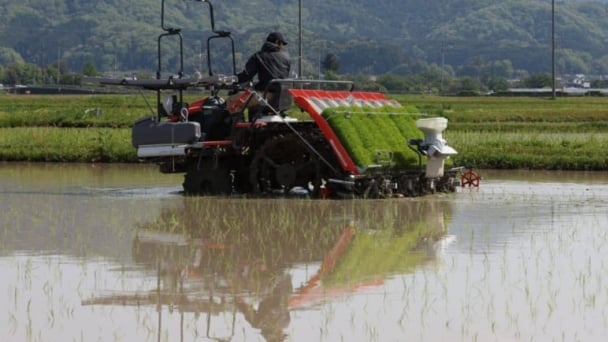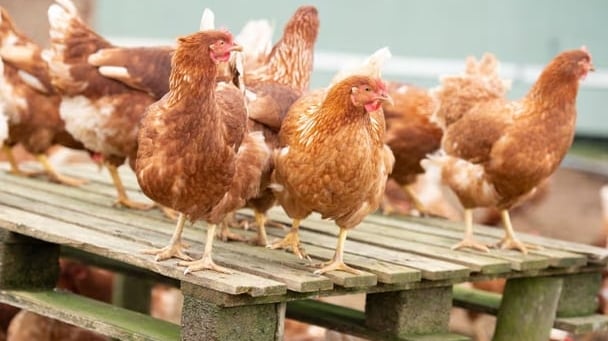May 18, 2025 | 08:34 GMT +7
May 18, 2025 | 08:34 GMT +7
Hotline: 0913.378.918
May 18, 2025 | 08:34 GMT +7
Hotline: 0913.378.918

Processing wooden furniture for export in Binh Duong. Photo: Thanh Son.
Despite the difficulties caused by the Covid-19 pandemic, Vietnamese wooden furniture exports to Canada are still growing strongly and will have positive growth in the coming years.
According to the Department of Trade Promotion (Ministry of Industry and Trade), Canada is one of the top 10 furniture manufacturers in the world and the country has a longstanding expertise in the field of furniture production.
However, in recent years due to rapid increase in imports and decrease in exports, Canada has become a net importer of furniture products.
Vietnam is becoming an important provider of furniture for Canada. In 2021, although Vietnam's export of wood and wooden products to the Canadian market was affected by the Covid-19 pandemic, the export turnover still reached US$ 416.4 million, up 27.4% in value compared to 2020, and accounted for 16.7 % of total import value of Canada.
The above results show that wood and wooden products, especially wooden furniture from Vietnam, have met the demand for consumption in Canada. Currently, furniture products made in Vietnam are easily found at large supermarket chains such as COSTCO, IKEA, LEON'S, etc.
The prospect of Vietnam's furniture and interior decoration exports to the Canadian market in the coming years is very positive, first of all thanks to the high consumption demand in the Canadian market, followed by the positive impact of the CPTPP (Comprehensive and Progressive Agreement for Trans-Pacific Partnership).

Some export wooden products of Vietnam.
According to marketinginsightsreports.com, Canada's home furniture market is forecasted to grow at an average growth rate of 6% between 2021 and 2025. The growth of Canada's home furniture market is driven by the growth of the construction activity, particularly in the housing sector in many parts of Canada. Consumers moving into new homes create high demand in buying new home furniture.
Vietnamese furniture has favorable conditions in the Canadian market thanks to the CPTPP Agreement. Because wooden furniture is eliminated all tax lines as soon as the CPTPP Agreement takes effect.
Taking advantage of market demand and the CPTPP Agreement to exploit the Canadian market, Vietnam's wooden products and interior decorations also have the opportunity to promote to other markets in North America, as Canada is considered a gateway to enter North America.
However, when exporting wooden furniture to Canada, Vietnamese enterprises need to consider some factors, such as the costs and trade remedies.
Ms. Tran Thu Quynh, Trade Counselor, Head of the Vietnam Trade Office in Canada, says that, at the end of December 2020, when there was an objection from furniture manufacturers in Canada, the Government of Canada started up the anti-dumping investigation with upholstered chair products originating from Vietnam.
There were only 8 enterprises answered the survey questionnaire, out of a total of hundreds of Vietnamese enterprises exporting wooden furniture to Canada at that time.
As a result, these 8 enterprises were only subject to a very low tax rate of 3.7%. Other businesses had to pay a very high tax rate of 179%, and it was very soon that they had to give up the market to competitors from Malaysia, Indonesia ... because they could not compete at this tax rate.
That was a great lesson for exporters of upholstered chairs in particular and wooden furniture in general. “Vietnamese wood industry enterprises need to cooperate with the Trade Remedies Administration whenever has an investigation by the importing country in relation to a certain furniture product in order to avoid adverse outcomes,” Ms. Tran Thu Quynh recommends.
Canada owns many high-end furniture brands. Therefore, in order for Vietnamese furniture and interior decoration to get deeper into the Canadian market, Vietnamese wood enterprises can coordinate to cooperate in production and business under the OEM (manufacturing to order) method, Ms. Tran Thu Quynh suggests.
In addition, Vietnamese enterprises can also coordinate in training of human resources, especially the combination of many types of materials in wood products, learning experience in wood treatment and painting, automation in production, or taking advantage of the Canadian partner's sales system to bring goods to the US market.
According to the General Department of Customs, in 2021, the export of goods from Vietnam to Canada reached US$ 5.3 billion, up 20.8% in comparison with the last year. That was the third consecutive year of positive growth since 2019 after Vietnam and Canada officially became members of the CPTPP Agreement.
Currently, Vietnam is Canada's largest trading partner in Southeast Asia. The room for Vietnamese goods to access the Canadian market is still very large, as it has accounted for only 1.7% of Canada's import value. The Canadian government continues to pursue a strategy of diversifying markets, including furniture, and considers Vietnam an important partner in Asia.
Translated by Duc Thuan

(VAN) In the face of counterfeit and imitation products, Khanh Hoa Salanganes Nest Company hopes for the prompt completion of the legal framework, strict enforcement against violations, and protection of the bird’s nest brand.

(VAN) Japan's efforts to lower the price of rice through the release of its stockpile may finally be making some progress, albeit at a snail's pace.

(VAN) U.S. tariffs are not only a 'shock', but also an opportunity for Vietnamese businesses to renew their mindset toward comprehensive development.

(VAN) As Bac Giang lychee enters the harvest season, Minister Do Duc Duy expects that the fruit will contribute greatly to agricultural exports due to standardized production and deep processing.

(VAN) Consumers have shown a preference for free-range eggs, but those farming systems are more vulnerable to biosecurity risks like bird flu.
/2025/05/09/5701-1-184335_301.jpg)
(VAN) Vietnam’s eel exports nearly doubled thanks to a mud-free farming model, opening up new prospects while still facing numerous barriers related to international standards.

(VAN) Minister Do Duc Duy warned that if production is not professionalized and supply chains are not transparent, the U.S. market could become a growth bottleneck.